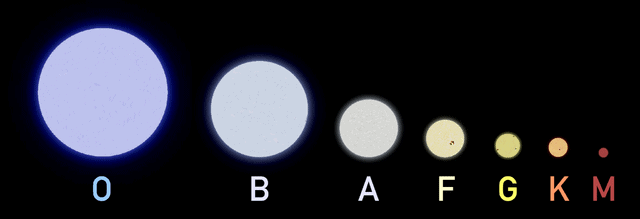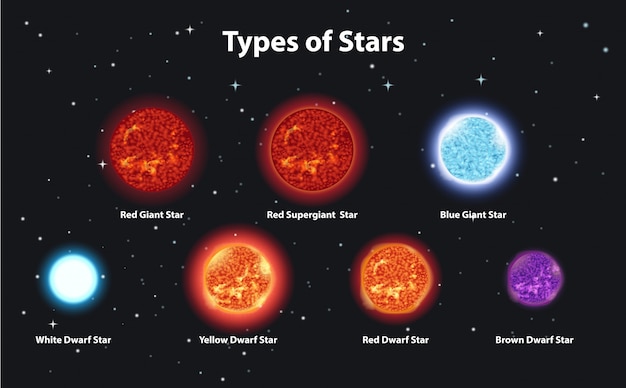JOURNEY THROUGH STARS!!
TWINKLE TWINKLE LITTLE STAR..
HOW I WONDER WHT YOU ARE..
UP ABOVE THE WORLD,SO HIGH
LIKE A DIAMOND IN THE SKY⭐
WE ALL HAVE HEARD THIS POETRY IN OUR CHILDHOOD..RIGHT?
SO NOW LET ME TAKE YOU IN THEIR WORLD..!!
Star is an astronomical object consisting of a luminous spheroid of plasma held together by its own gravity.
The life cycle of a star spans billions of years.It can be said tht, the more massive the star, the shorter its life span.
The birth of star takes place inside hydrogen based dust clouds called NEBULAE.Millions of years later, when the core temperature climbs to about 15 million degree Celsius nuclear fusion begins, igniting the core and setting off the next—and longest—stage of a star’s life, known as its main sequence.
Most of the stars in our galaxy, including the sun🌅, are categorized as main sequence stars.They exist in a stable state of nuclear fusion, converting hydrogen to helium and radiating x-rays.
Some stars shine more brightly than others. Their brightness is a factor of how much energy they put out–known as luminosity and how far away from Earth they are. Color can also vary from star to star because their temperatures are not all the same. Hot stars appear white or blue, whereas cooler stars appear to have orange or reddish.💥
Stars are not spread uniformly across the universe, but are normally grouped into galaxies along with interstellar gas and dust. A typical galaxy contains hundreds of billions of stars, and there are more than 2 trillion that is 10 raise to the power 12 galaxies.😵.
Stars spend 90 percent of their lives in their main sequence phase. Now around 4.6 billion years old, Earth’s sun is considered an average-size yellow dwarf star, and astronomers predict it will remain in its main sequence stage for several billion more years.
As stars move toward the ends of their lives, much of their hydrogen has been converted to helium. Helium sinks to the star's core and raises the star's temperature causing its outer shell of hot gases to expand. These large, swelling stars are known as red giants. But there are different ways a star’s life can end, and its fate depends on how massive the star is.
Now let's talk about their types..
There are many star classification systems in use today, however, the Morgan-Keenan system is the easiest to understand. Stars are classified in this system using letters O, B, A, F, G, K, and M. They are classified based on their temperature the hottest is O and the coolest is M. The temperature of each spectral class is then subdivided by the addition of a number, 0 stands for the hottest while 9 for the coolest.
Have you ever heard about blue stars??
Now let me tell you about this...
These types of stars are quite rare with spectral types of either O or B. Their temperatures are around 30.000 K, with luminosities around 100 to 1 million times that of the Sun. They usually have a mass around 2.5 to 90 times that of the sun and last about 40 million years.
They have weaker hydrogen and neutral helium lines in their spectra than B-type stars.Because of their mass and temperature, they have short life spans that end in a supernova explosion resulting in either black holes or neutron stars. Some examples of blue stars: Delta Circini, V560 Carinae, Theta1 Orionis C.💙
EVERYONE!!
Do visit the site which i m mentioning below..as it cantains more information about the classification of stars of other types.😇
(https://www.universetoday.com/24299/types-of-stars/)
FEW INTERESTING FACTS ABOUT STARS...
💫The most distant individual star detected is a blue supergiant named Icarus. It is around 14 billion light-years away from Earth.🌎
💫If Jupiter would be around 79 times more massive, it would turn into a star.
💫Stars actually don't twinkle it's just earth's turbulent atmosphere.The light eventually gets to your eyes, but every deflection causes it to change slightly in color and intensity. The result is “twinkling.” Above the Earth’s atmosphere, stars do not twinkle.
💫You can only see about 2,000 stars on a very dark night with the naked eye from any given place on Earth. To do this, you need to observe on a moonless night and be far away from sources of light pollution.👀
💫When you look at a star you are seeing how it looked in the past.(i have disscussed this in my previous post..you cn check out)(https://universebelike.blogspot.com/2020/07/intresting-facts-about-space.html)
THAT'S IT FOR TODAY..!I HOPE YOU ALL ENJOYED READING THIS..!
DO LET ME KNOW UR VIEWS IN THE COMMENT SECTION!!
THANKYOU!!






Awesome buddy
ReplyDeleteTHANKYOU SO MUCH..!!
DeleteSuperb...👌👌
ReplyDeleteTHANKYOU!!
DeleteBhdiya 🔥🔥🔥
ReplyDeleteGLAD YOU LIKE IT..!
ReplyDeleteExcellent work👌✌
ReplyDelete